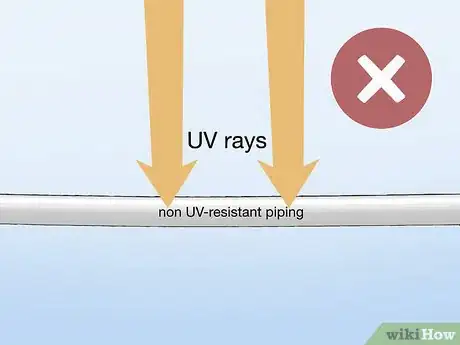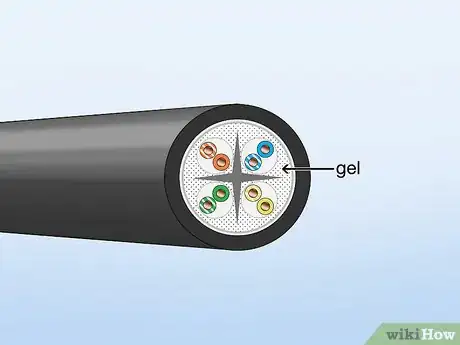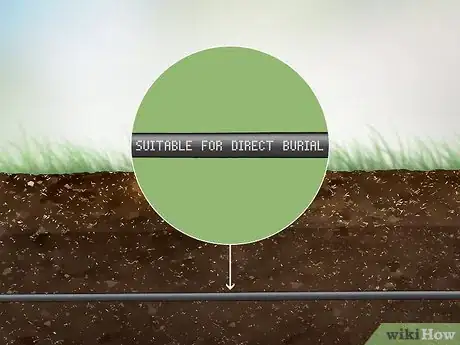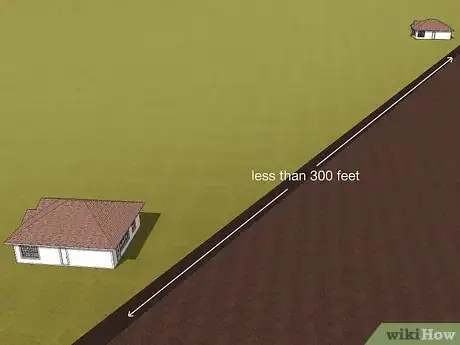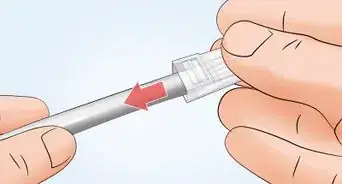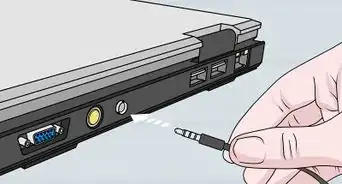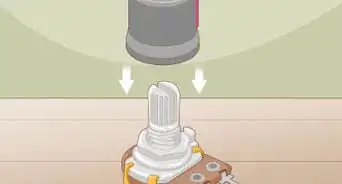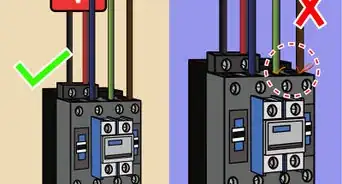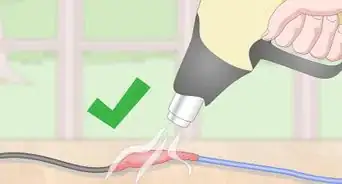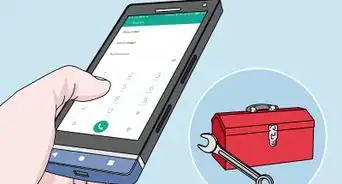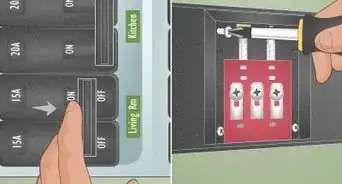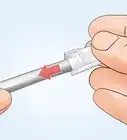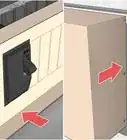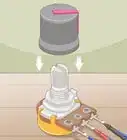This article was co-authored by Ricardo Mitchell. Ricardo Mitchell is the CEO of CN Coterie, a fully licensed and insured Lead EPA (Environmental Protection Agency) Certified construction company located in Manhattan, New York. CN Coterie specializes in full home renovation, electrical, plumbing, carpentry, cabinetry, furniture restoration, OATH/ECB (Office of Administrative Trials and Hearings/Environmental Control Board) violations removal, and DOB (Department of Buildings) violations removal. Ricardo has over 10 years of electrical and construction experience and his partners have over 30 years of relevant experience.
This article has been viewed 43,873 times.
Ethernet cables are a convenient and portable way to connect PCs, routers, and switches. If you're using an outdoor Ethernet cable, you may want to give it added protection from water and weather conditions. Taking steps to limit your UV, water, and lightning strike damage while fortifying underground Ethernet cables can prevent long-term damage. With a few easy adjustments, your cables will be as safe and efficient as possible.
Steps
Reducing the Risk of Lightning Strikes and Storm Damage
-
1Weatherproof your Ethernet cable's connector box. Making your connector box weatherproof can both minimize the likelihood of strikes and extent of damage withstood during stormy weather. Replace the cover plate with an outer plating and apply a silicone seal to the outer edges to make it weatherproof and resistant to storm damage.[1]
- Applying a silicone seal can also help your connector box keep insects and other pests out.
-
2Pick a waterproof cable to minimize damage during storms. Waterproof cables are more likely to withstand power surges and damage during stormy weather. Although most outdoor cables are waterproof, some may not be—make sure your Ethernet cable has a waterproof coating before installing it.Advertisement
-
3Choose an Ethernet cable that can withstand surges of at least 6 kV. Although you may not be able to control lightning strikes, you can control whether sudden electrical surges damage your cord. To prevent damage during storms or power surges, choose an Ethernet cable and connector that can handle at least 6 kilovolts (kV).[2]
- Cables and connectors that can handle 6 kV may still withstand damage from surges but to a lesser extent.
-
4Look for polyethylene cables that can withstand extreme temperatures. If you'll be running your Ethernet cable in harsh weather, choose one with a polyethylene jacketing. Polyethylene cables work efficiently in both hot and cold weather and can withstand temperatures down to −40 °C (−40 °F).[3]
- Polyethylene Ethernet cables are made to withstand weather and temperature changes, so they're ideal for outdoor use.https://www.wikihow.com/Protect-an-Outdoor-Ethernet-Cable
- Basic PVC cables, in contrast, can only withstand temperatures down to −20 °C (−4 °F).
Limiting UV or Water Damage
-
1Choose an outdoor cable with a UV-resistant coating. Some Ethernet cables have an outer coating that protects it from sun exposure and UV damage. Make sure the cable you choose is labeled "UV-resistant," especially if you'll be running it outdoors instead of underground.
- Most UV-resistant coatings are also waterproof.
-
2Avoid PVC piping without a UV coating. Most Ethernet cables made with PVC piping are not UV-resistant. Before buying a PVC cable, make sure it is UV-resistant if you plan on using it in direct sunlight.[4]
- You can also choose a cable made of polyethylene instead, which is naturally UV-resistant.
-
3Choose a gel-filled cable for added waterproofing protection. Some Ethernet cables come filled with a waterproof gel that keeps the internal wires coated and protected from water that might seep in. Pick a gel-filled cable if you plan to run it near water or in wet weather.
- Gel-filled cords are also ideal for installing underground cables.
-
4Hold your Ethernet cord in place with cable straps. To keep your cable away from water sources or, if desired, direct sunlight, use cable straps to anchor it away. Drill 2 holes on either side of the cable and screw in the cable strap to safely and effectively secure it to a building or other stable structure.[5]
- You can buy cable straps online or from most hardware stores.
Burying Ethernet Cables Underground
-
1Choose a direct burial Ethernet cable for the safest option. Avoid burying basic Ethernet cables, as they are not built to run in underground conditions. Make sure your cable is labeled "direct burial" before purchasing, as they're made with stronger waterproofing materials and can withstand rodent or larger pest damage.
- Check the packaging or contact the cable's manufacturer for details specific to your cable's abilities.[6]
-
2Run your cable no more than 300 feet (91 m) underground. Going over this limit can exceed your cord's energy capacity and leave it vulnerable to external damage. If you need to cover an area of more than 300 feet (91 m), install multiple cables to cover the different areas.[7]
-
3Use a PVC conduit to run certain non-direct burial cables underground. If you do not have a direct burial Ethernet cable, you may still be able to bury it with a conduit. Slide the conduit over the cable before installing it to bolster your cable's protection in underground conditions.[8]
- A conduit is a thin tubing that slides over the cable and protects it from extensive damage.
- Contact the cable's manufacturers or read its instruction manual before installing a conduit.
Expert Q&A
Did you know you can get expert answers for this article?
Unlock expert answers by supporting wikiHow
-
QuestionWhy are polyethylene outdoor Ethernet cables more resistant to damage from extreme temperatures than regular Ethernet cables?
 Ricardo MitchellRicardo Mitchell is the CEO of CN Coterie, a fully licensed and insured Lead EPA (Environmental Protection Agency) Certified construction company located in Manhattan, New York. CN Coterie specializes in full home renovation, electrical, plumbing, carpentry, cabinetry, furniture restoration, OATH/ECB (Office of Administrative Trials and Hearings/Environmental Control Board) violations removal, and DOB (Department of Buildings) violations removal. Ricardo has over 10 years of electrical and construction experience and his partners have over 30 years of relevant experience.
Ricardo MitchellRicardo Mitchell is the CEO of CN Coterie, a fully licensed and insured Lead EPA (Environmental Protection Agency) Certified construction company located in Manhattan, New York. CN Coterie specializes in full home renovation, electrical, plumbing, carpentry, cabinetry, furniture restoration, OATH/ECB (Office of Administrative Trials and Hearings/Environmental Control Board) violations removal, and DOB (Department of Buildings) violations removal. Ricardo has over 10 years of electrical and construction experience and his partners have over 30 years of relevant experience.
Electrician & Construction Professional, CN Coterie
Warnings
- Only use Ethernet cables that are marked for outdoor use. Using indoor Ethernet cables can result in serious injuries and nullify any product warranties.[9]⧼thumbs_response⧽
- Do not use damaged or broken Ethernet cords outside. Throw them away and purchase new Ethernet cords as a safer choice.⧼thumbs_response⧽
References
- ↑ https://www.youtube.com/watch?v=8_bUPJftvwc&feature=youtu.be&t=36
- ↑ https://incompliancemag.com/article/designing-ethernet-cable-ports-to-withstand-lightning-surges/
- ↑ https://www.cablewholesale.com/support/technical_articles/direct_burial_outdoor_cable.php
- ↑ https://www.cablewholesale.com/support/technical_articles/direct_burial_outdoor_cable.php
- ↑ https://www.youtube.com/watch?v=7nkvbPos0dE&feature=youtu.be&t=582
- ↑ https://www.cablewholesale.com/support/technical_articles/direct_burial_outdoor_cable.php
- ↑ http://www.cat-5-cable-company.com/faq-installing-CAT5-Underground.html#
- ↑ https://www.cablewholesale.com/support/technical_articles/direct_burial_outdoor_cable.php
- ↑ https://www.statefarm.com/simple-insights/residence/extension-cord-safety-what-to-do-and-what-to-avoid



